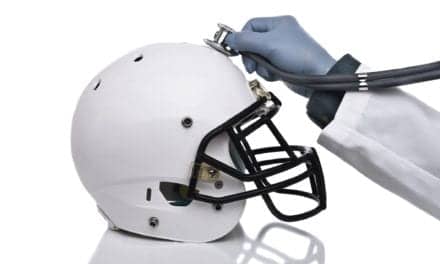Obstructive sleep apnea is a chronic condition, yet many clinicians and patients focus on the first 90 days. Some stakeholders envision years-long follow-up that considers the dynamic nature of the sleep disorder.
The vast majority of obstructive sleep apnea (OSA) cases require a lifetime of management to control—similar to other chronic disorders such as hypertension and diabetes. But the care pathway for many OSA patients more closely resembles that of people with surgical diseases such as appendicitis or cataracts: A flurry of activity until diagnosis, a sense of urgency to implement a therapy, then short-term follow-up.
Sleep apnea care focuses on the first 90 days. This is a reflection of factors such as payor requirements (notably, Medicare’s CPAP compliance guideline stating it won’t pay for continued therapy without adherence in that time frame), studies showing patients’ initial therapy usage informs later usage, and time constraints on sleep professionals.
But the emphasis on those first 90 days coupled with less focus on optimizing long-term care has its consequences. Some patients are shortchanged of lifelong symptom abatement and comorbidity management, particularly if they lose motivation to continue with therapy, their disorder becomes more severe, or they also have one of the many other disorders linked to sleep apnea.
“It has been well described in the literature that adherence to CPAP slowly wanes over time,” says Sanjay R. Patel, MD, MS, professor of medicine at the University of Pittsburgh and director of the University of Pittsburgh Medical Center’s Sleep Medicine Center. “This appears to be the biggest barrier to optimizing long-term outcomes from CPAP therapy (both in terms of symptoms as well as potential long-term consequences such as cardiovascular disease, motor vehicle collisions, dementia, etc).”
Now some stakeholders are clearing the path for long-term OSA management. Changes such as improved technology—including wireless transmission of CPAP data and the ability of machine learning to find patterns in health data banks—and an increasing focus on value-based care make a compelling case that OSA patients can be monitored for years or decades and patient therapies can be adjusted over time.
CleveMed is one such stakeholder. The sleep diagnostics company has recently earned more than 20 patents related to long-term therapy management, mostly related to wireless communication between CPAPs and home devices. Hani Kayyali, CleveMed president and CEO, says, “About 15 years ago, when we started developing the technology and protecting it with our [intellectual property], insurance policies and the industry in general were focused more on the problem and less on the solution! Policies for identifying, diagnosing sleep apnea in the sleep labs, and initiating treatment were established (for the most part), but long-term therapy monitoring received less attention. Given the duration of CPAP therapy, often for decades, and the prevalence of serious cardiovascular comorbidities, we believed that, at least for some patient populations, a deeper review of therapy outcomes beyond the standard CPAP compliance report will become necessary.”
Intense long-term follow-up isn’t necessary for all patients, of course. As Patel notes, “The development of auto-titrating CPAP and the ability of CPAP machines to report residual AHI [apnea-hypopnea index] has reduced the relevance or necessity of routine follow-up testing over time in patients who are clinically doing well.” But since CPAP use in general wanes with time, “more research is clearly needed to understand how to prevent this reduction in adherence over time, when and how to intervene in patients who had previously been adherent but are now not doing well with their usage, and whether there are subgroups of patients who are at higher risk for waning adherence who should be followed more closely,” he says.
Patel is a coauthor of a new American Academy of Sleep Medicine (AASM) clinical practice guideline that will publish in the Journal of Clinical Sleep Medicine’s February 2019 issue. In its “good practice statement” section, it addresses long-term management: “The timing of adequate follow-up after treatment is initiated will vary depending on patient circumstances. However, patients should be followed in the initial weeks to months after PAP initiation to promote adherence and assess response to treatment. Subsequently, yearly evaluation by a trained health care provider is reasonable, although longer periods of follow-up may be appropriate for selected patients who are highly adherent to PAP therapy, have sustained resolution of OSA-related symptoms, and have no concerns regarding their PAP therapy. In contrast, patients with persistent or recurrent sleep-related complaints or persistent difficulties with PAP use should receive more frequent follow-up to address their issues. Routine sleep testing to re-evaluate OSA status in patients on PAP therapy with good symptom control and no change in clinical status (e.g., significant weight loss or upper airway surgery) is considered low value care.”1
How Technology Facilitates Follow-up
Technological advancements in just the past few years have already improved follow-up. “I’ve had great difficulty in the past getting CPAP data from DMEs [durable medical equipment companies] up until the development of new remote monitoring technology,” says Thomas Hinton, pulmonary sleep coordinator at Morton Pulmonary and Sleep, and senior sleep ambassador for SleepCentric. “It’s very frustrating when you’ve requested patient data a week before their visit and still don’t have it the day of the appointment, especially when more than one request was sent. But we’ve changed that by installing the software of multiple CPAP machine brands, which allows us to download patient data ourselves.” With a few clicks of a mouse, Hinton now places the information in patients’ chart before they arrive. He says, “The ability to monitor/retrieve patient data remotely has been a huge game changer!”
But these new technologies aren’t always fully integrated into clinical care. “Currently, DME providers monitor PAP usage very closely for 90 days and work with PAP manufacturers to develop algorithms to help them know when to call a patient and intervene when, for example, they see two days of non-use. Unfortunately, all this technology is turned off or ignored after 90 days even though we know adherence slowly wanes over time,” Patel says.
And little research has been done on the benefits of telemonitoring after the first 90 days, so it’s unclear how to use the technology after this juncture. A newly published ResMed-supported analysis provides some valuable insights. The follow-up to the “Tele-OSA” randomized clinical trial found that patients who had telemonitoring messaging (via the U-Sleep platform) for two years continued to have higher adherence rates than patients on traditional pathways that did not include telemonitoring. But the discouraging news is that the patients who started with telemonitoring messaging—and the resulting higher adherence—saw their adherence slip after the telemonitoring was turned off at 3 months. By 8 months, their adherence was the same as patients who never had telemonitoring at all.2
“These findings reaffirm the power of remote monitoring to improve 90-day therapy adherence, and even go a step further, saying that continued feedback messaging (which both U-Sleep and ResMed’s other remote monitoring platform AirView provide) can potentially help keep users adherent beyond that 90-day mark,” says Maureen Crocker, BS, MBA, study coauthor and medical affairs manager at ResMed.
In the real world, once therapy users opt in to allow their clinicians to remotely monitor their device use, that service continues as long as it’s billed for, Crocker says, unless the user were to opt out.
Crocker also points to another ResMed study that provides clues about factors that may enhance long-term adherence. The study of more than 100,000 well-matched PAP users found that, over a one-year period, those enrolled in a resupply program slept 5.6 hours on PAP each night, compared to 4.5 hours/night for those not enrolled (a 24% increase).3 “More research is needed around what tools and practices significantly encourage long-term PAP adherence. Ninety-day adherence is important for many reasons, but sleep apnea is a chronic condition, meaning PAP is necessary throughout the user’s life in order to maximize their health and quality of life,” Crocker says.
Strides in EHR Integration
Interoperability with electronic health records (EHR) and other medical systems is another area where strides have already been made. ResMed, for example, works with hospitals to integrate cloud-connected PAP data into hospital EHRs. “This past June, we integrated data from more than 30,000 ResMed PAP devices into the EHR at Providence St. Joseph Health, America’s third largest health system,” Crocker says. “We will continue to expand connectivity across our sleep and respiratory care product ecosystem, to innovate how these devices collect and share actionable insights with clinicians and patients, and to research what data and data-sharing features are most beneficial to encouraging long-term therapy adherence.”
Philips too has initiatives in this area. Philips Care Orchestrator patient management solution supports the integration of data from multiple medical devices, such as PAPs, ventilators, and oxygen concentrators, as well as monitoring devices such as weight scales and blood pressure cuffs. “This provides both patients and their care teams with the information to make fast, informed clinical decisions,” says Tom Catalano, director of global sleep therapy marketing at Philips.
Integrating CPAP, HST, and More
CleveMed’s Kayyali has a dramatic vision for sleep apnea device integration. He thinks a “richer set of physiological parameters are needed” to track patients who are of greatest concern to clinicians, including those who are nonadherent or who have new or worsening comorbidities. One solution, he says, is to integrate home sleep testing (HST) devices with positive airway pressure devices. “One home device described in our [patent] claims is a sleep monitor that can be integrated wirelessly to send its data like respiratory effort, heart rate, blood oxygenation, and body position to the CPAP and merge that data with standard CPAP measurements like airflow and mask leak for a more detailed compliance report,” he says.
While Kayyali concedes that assessing disease severity through CPAP-AHI could be sufficient for compliant patients, he says the additional cardiorespiratory signals that could be provided through an integrated home sleep test can “offer a more detailed picture of patient response and may be more reliable for treatment monitoring and intervention” for those who need it.
Once patients have started on CPAP, the CPAP mask blocks the standard connection port for a home sleep test nasal cannula/thermistor, Kayyali says, which translates into a more complex HST setup involving an additional tube. So CleveMed’s solution offers an easier way to implement home sleep testing with CPAP using wireless technologies.
He likens repeat home sleep testing for patient subpopulations to the care protocols recommended for people with diabetes. “While diabetics are asked to measure their blood sugar daily, they are also asked to measure their A1C twice a year per the American Diabetes Association,” Kayyali says. “Therefore, in the case of diabetes, the standard of care includes a more complete picture of sugar level in the body as a whole, in addition to the daily snapshot assessment. Shouldn’t sleep apnea be treated the same way?”
Because other parameters impact comorbidities such as cardiovascular risk, additional sensors, including those from consumer wearables, may one day also be integrated into CPAP-HST data. This could include measurements such as nocturnal blood pressure, weight, and daily steps.
Parallel innovation is happening in the cardiology sphere. For example, some new pacemakers include sleep apnea measurements. An analysis of 54 elderly patients implanted with LivaNova Reply 200 pacemakers found a strong positive correlation between respiratory disturbance index (RDI) as measured by the pacemaker’s transthoracic impedance-derived algorithm and a conventional RDI measurement conducted during an in-lab polysomnogram.4
Access Challenges Continue
Strides are being made, but other obstacles remain firmly in place. One such issue is: Who owns positive airway pressure data? As Patel sees it, “PAP manufacturers believe they own the data and can control/sell the data as they see fit since it lives on their servers, while DME providers believe they own the data as they set up the patients. Patients are increasingly concerned about how either PAP manufacturers or DME providers handle their data including sharing it with third-party payors or others.” Legal changes are likely needed to ensure physicians have ready access to the data, Patel says.
Bob Stanton, a truck driver who works for a company that hires commercial vehicle operators, runs into data access issues regularly. Sometimes a truck driver must switch CPAP devices mid-therapy only because he needs a compliance report printout and has no other way to get it.
“A huge issue is for treatment providers getting access to the manufacturers’ software for CPAPs they don’t sell,” says Stanton, who has OSA himself. New drivers “often were tested and put on CPAP while working for another motor carrier using a competitor in OSA testing and treatment.” If the new provider doesn’t sell that specific brand of CPAP, Stanton says the CPAP maker often won’t release the required software log-in rights to access compliance data. Meanwhile the “competitor who sold the machine is no longer getting paid for services by the carrier so they don’t want to run compliance reports,” he says. So “in a couple of cases we ended up just eating the cost of a new CPAP to get access to compliance data,” Stanton says.
Big Data Could Provide Big Solutions
Accessibility issues notwithstanding, companies are eyeing opportunities in big data, which some see as an underutilized information source that could help with long-term patient management.
“Given the growing role of Big Data in influencing care pathways, the demand for more sleep information will only intensify,” says CleveMed’s Kayyali. “By coordinating with healthcare providers, CleveMed intends to apply algorithms to its HST data set, which exceeds over 120,000 studies, to determine interesting correlations with disease outcomes that may assist in directing research efforts for the future.”
Already, CleveMed is seeing real-world applications. Upon request, it gives providers reports of their HST data, highlighting aspects such as study success rate, prevalence of comorbidities, turnaround time, and others. CleveMed medical director Tim Kowalski, MD, CPE, says, “For instance, you can look at the 4,000 studies that a given entity ordered and tell the typical level of severity result. If all the tests come back with severe results, then it’s logical to ask: Are you missing people in the moderate range? Or, if a lot of people are getting results that indicate mild sleep apnea, then the provider could consider if they are over-testing.”
Kowalski, who practiced sleep medicine for 30 years, says anyone who has robust databases can analyze their data to move the field forward. “Academic centers are always looking at data and the next best thing. They can use these databases and make best practice guidelines,” he says. “And businesses, either diagnostic or treatment equipment, can also take the lead.”
Optimizing Long-term Management
As sleep medicine evolves, OSA management strategies will likely evolve as well. Also likening sleep apnea care to diabetes care, CleveMed’s Kowalski says, “You wouldn’t take one of the first insulins given to you 20 years ago and take it today. So as science evolves, the treatment needs to evolve. As people evolve, the treatment also needs to evolve.”
Market factors may also sway providers toward long-term management. “The increased emphasis on value-based reimbursement models may lead to physician reimbursements tied to reduction in cardiovascular disease incidence or a valid surrogate such as PAP adherence,” Patel says, adding that changes like this “will increase interest in understanding how to better optimize long-term care of OSA patients on PAP therapy.”
Sree Roy is editor of Sleep Review.
References
1. Patil SP, Ayappa IA, Caples SM, et al. Treatment of adult obstructive sleep apnea with positive airway pressure: an American Academy of Sleep Medicine clinical practice guideline. JCSM. 2019;15(2):in press.
2. Chang J, Liang J, Becker K, et al. 1048 Impact of automated CPAP tele-monitoring on CPAP adherence at 2 years: Follow-up from the Tele-OSA randomized clinical trial. Sleep. 27 April 2018;41(suppl_1):A390.
3. Benjafield A, Cooper L, Willes L, et al. 0528 Impact of a mask resupply program on therapy compliance: a retrospective analysis. Sleep. 27 April 2018;41(suppl_1):A197–8.
4. Dias M, Gonçalves I, Amann B, et al. Utility of new-generation pacemakers in sleep apnea screening. Sleep Med. 2017 Sep;37:27-31.







What % of population get cured of CPAP treatment?